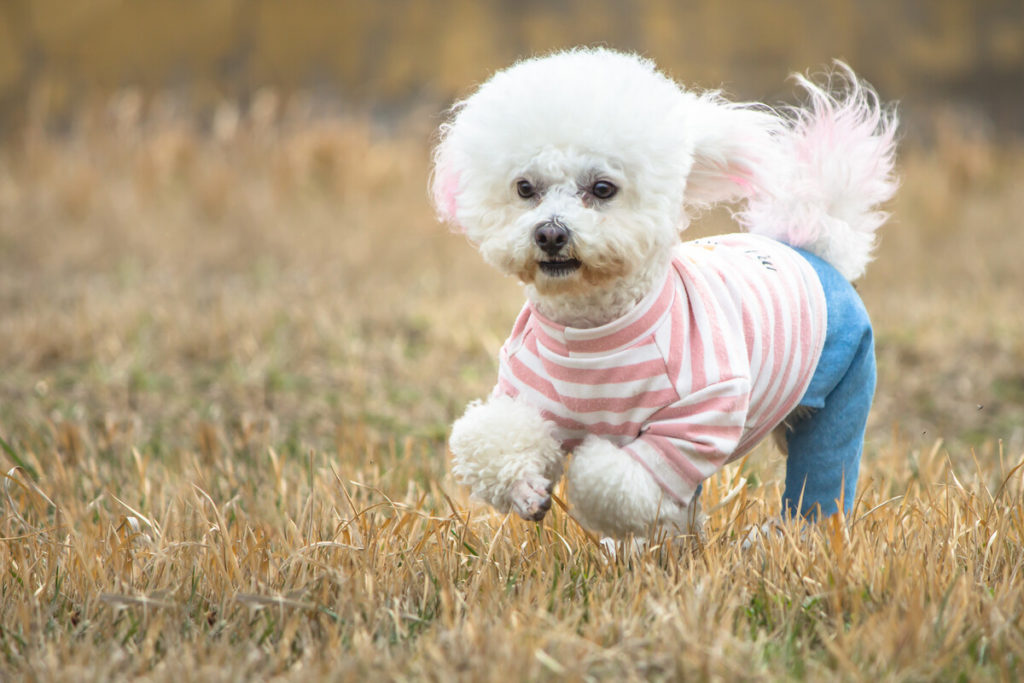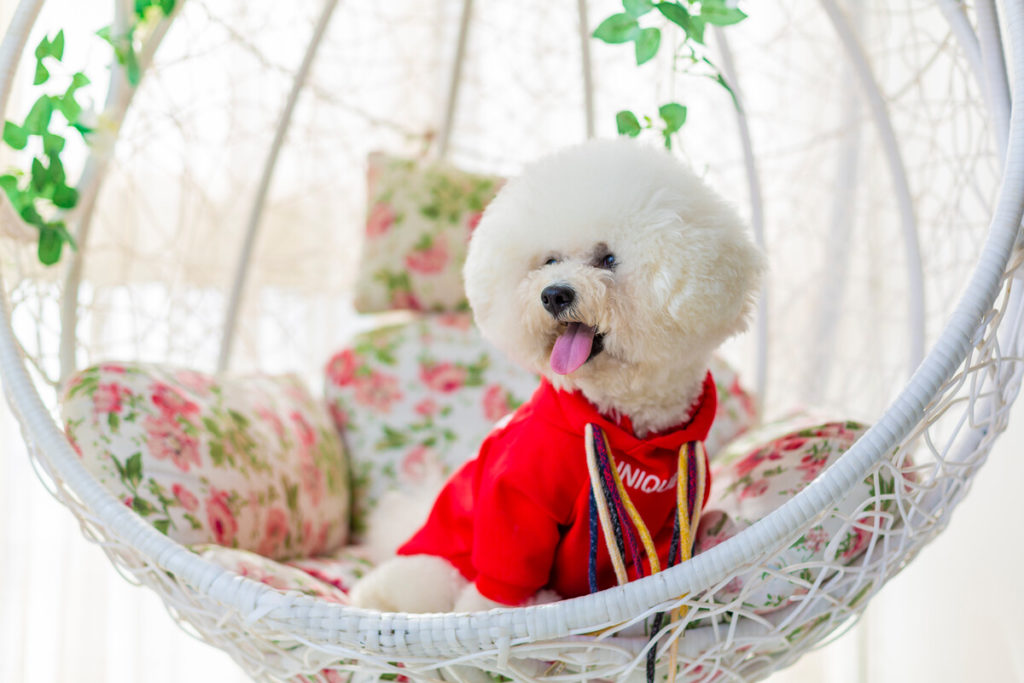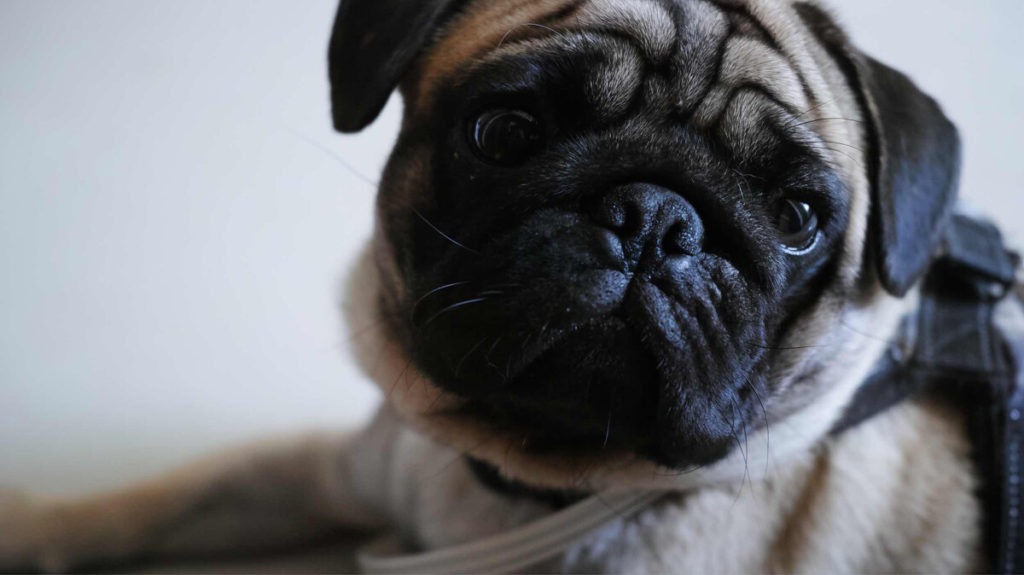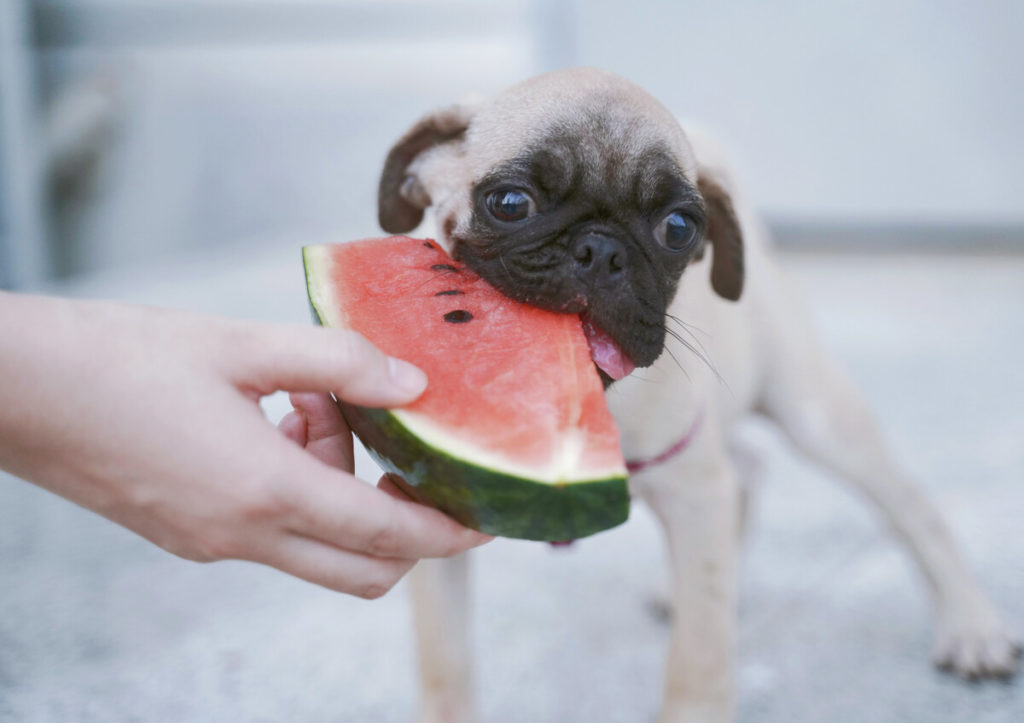Pugs are loyal, sociable, and love to cuddle. They’re truly one of the best companion dogs there is and they deserve the absolute best. Today, it’s all about the Pug harness: why you should use one, different kinds, how to choose the right one, and our top 5 preferred harnesses.
Why Should I Use a Harness for my Pug?
Pugs love walks! Although long walks are not recommended due to obstructive breathing that many Pugs encounter, short walks for your pup to release some energy and sniff around are perfectly fine and a great way to bond with your precious fur child.
Since Pugs have flat faces, their nostrils are narrow. They have a soft palate that hangs down and partially or fully blocks the airway. Because of this, they can face breathing difficulties, especially during walks. Leash pulling affects breathing in all dogs and a harness can relieve some of this.
Another benefit of using a harness is that a special rehabilitation harness can help you when assisting your disabled Pug as it gives you more control.
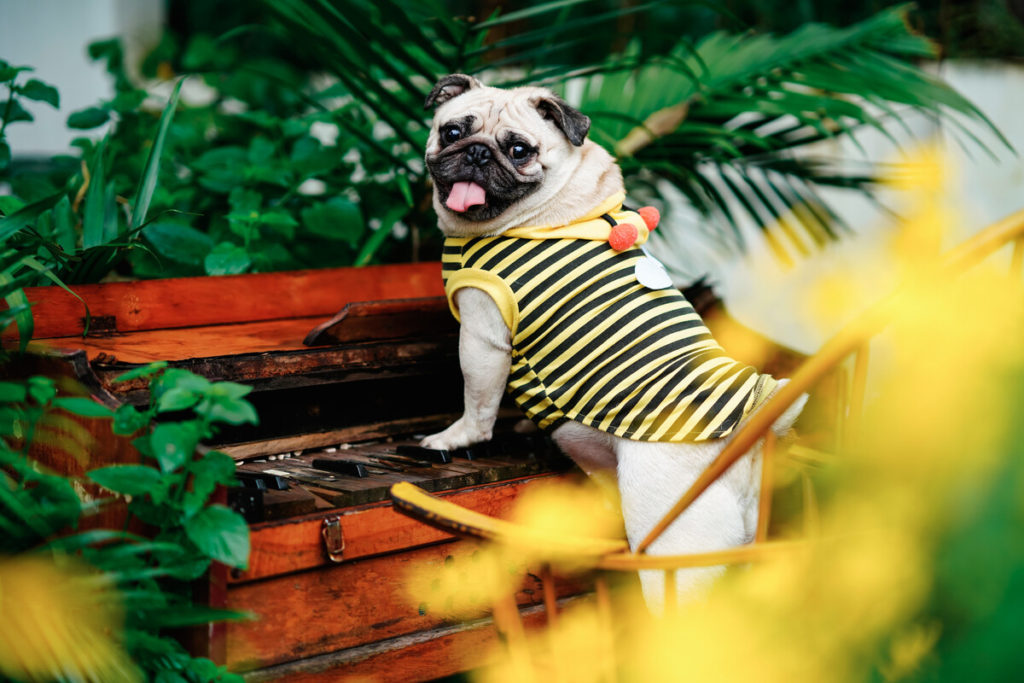
Collar vs. Harness
It’s a great idea to use a collar and a harness simultaneously. A collar is needed for a dog to wear identification tags with its name and your contact information and this should definitely not be forgotten. Better safe than sorry if anything happens to your pup.
In addition to the collar, a Pug harness is used for training purposes. A harness is the safest place to attach a leash because it secures your pup and it prevents strain on its neck. Dogs are less likely to slip out of a harness than they are a collar and a walker has more control when using a harness.
Keep in mind that a collar and a harness should be removed when your Pug is playing or when it’s in a crate because they can get caught on things and possibly injure your dog.
Types of Harnesses
Before we get into the best Pug harness for your pup, let’s look at the various options, what they are, and pros and cons.
Back-Clip Harness
The back-clip harness is one that many people use. As you’d imagine, they clip on your dog’s back.
- Pros – Since this attachment is far from the neck and throat, there is a slim chance of injury. The leash is also away from your dog’s leg which would prevent tangling.
- Cons – Back-clip harnesses can cause dogs to pull since they move in the opposite direction where force is. If you’re pulling from their back, they will probably pull forward and as we all know, a dog that pulls isn’t always so fun to walk.
Front-Clip Harness
A front-clip harness is just that. Its clip ring is in front of the dog’s chest. It’s common for pet owners to avoid these because they aren’t seen as often, but they’re a great option.
- Pros – A front-clip harness is ideal for pullers. As a dog pulls forward, they’ll feel pressure in front which is a natural indicator for them to slow down.
- Cons – Since the leash is clipped close to its legs, it may get tangled around the legs more easily than another Pug harness.
Dual Harness
The dual-clip harness has a hook in the front and the back. This allows you to attach the leash behind your Pug’s back or at its chest. You can also use two leashes and attach a leash in both places.
- Pros – This harness provides the most flexibility as you can choose the best option when it comes to where to hook the leash to your Pug harness. You can also use both hooks for maximal control.
- Cons – This kind of harness can take some getting used to for you and your pup especially if you use both hooks at once. Additionally, the convenience of two hook options may come with an increased price.
Head Halter
The head halter looks like a muzzle but it’s actually used for walking a Pug that may be impulsive or a strong puller. The head halter provides one strap around the neck and a strap across the snout while the leash attaches below the chin. This would force your dog’s nose to move down and back towards you so that it can’t pull you forward.
- Pros – The head halter allows someone to control a more aggressive dog. It can be very helpful for a small person with a large dog (although this isn’t the case with the small Pugs).
- Cons – As you can imagine, dogs don’t typically enjoy the head halter and may not respond well to it. There’s a chance it will make their walks unenjoyable. It can also irritate their neck as well as be distasteful to other passersby.
A head halter is probably the last harness you will need for your little Pug. As we know, Pugs are laid-back pups who are rarely out of control. If there is ever a major issue with them, they are small enough for us to scoop up and they aren’t big enough to pull most grown adults down.
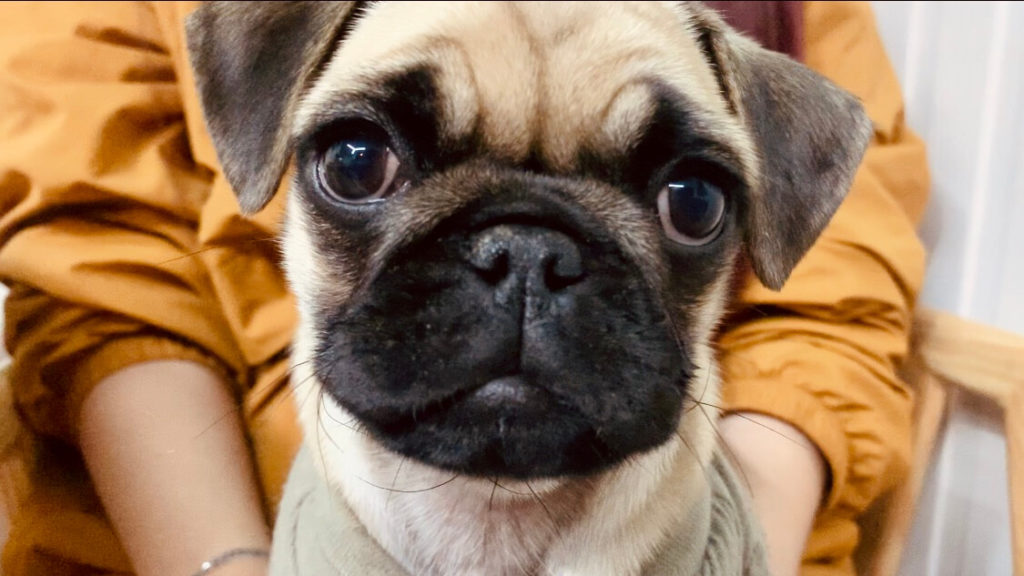
Rehabilitation Harness
If you’re on the hunt for a Pug harness that helps with limited mobility due to age or an injury, a rehabilitation harness might just be the answer. Typically, rehabilitation harnesses act as a sling that will wrap around your dog’s body and it has a handle for you to hold to take some weight from your dog.
- Pros – A rehabilitation harness can make daily activities like walking, getting into the car, and using stairs more comfortable and less painful for a pup who’s struggling.
- Cons – Since you may rely on this often to help your disabled dog, it can eventually rub and irritate your Pug’s skin. You can avoid this by making sure you purchase one that’s the proper size and has padding.
Choosing the Best Pug Harness
It can be overwhelming to select the right harness when there are so many options. Now that you know more about the different types of harnesses and their pros and cons, you can start thinking about which one seems best for your Pug.
Which harness should I choose?
- A back-clip harness is best for a calm, trained dog.
- A front-clip harness is best for a dog who pulls during walks. Keep in mind that this type of harness can result in the leash tangling around your Pug’s leg if the leash is too long.
- A dual-clip harness is best for flexibility or if you need to use two leashes for extra control.
- A head harness is best for a dog who may act rash during walks.
- A rehabilitation harness is best for a disabled dog either because of old age or an injury such as hip dysplasia, arthritis, or recent surgery.
Which fabric should I choose?
- Most harnesses are made of nylon or another synthetic fabric. Nylon harnesses are easier to adjust.
- A padded harness can be more expensive but provides extra comfort for your Pug.
Which size should I get?
- Using a flexible measure tape, measure your dog’s chest by starting at the rib cage and wrapping the measuring tape around its back and back to the starting point.
- Measure your dog’s neck by wrapping the flexible measuring tape around the thickest part of the neck where it meets the shoulders.
- Some harness guides offer a weight option, so you can also weigh your pup.
*It’s usually helpful to go ahead and purchase an adjustable harness.
Our 5 Favorite Pug Harnesses
Now that you know all about a Pug harness, it’s time to share the top ones!
Front-Clip Harness: PetSafe Easy Walk Deluxe Harness

A vet behaviorist, who may know a thing or two, created this top-notch, useful harness many years ago and it’s still around helping dog owners teach leash manners. The easy walk deluxe is straightforward to use as it simply snaps on the shoulder and belly. It’s simple, but durable straps mean less bulky coverage and more room to breathe for your pup.
Back-Clip Harness: Voyager Step-in Air Dog Harness

Year-round walks are so doable with this lightweight, mesh harness and the reflective bands will allow you to feel more secure when walking during dark hours. The rear clip means your Pug is safer from the possibility of getting its legs tangled in the leash.
Dual-Clip Harness: Auroth Tactical Dog Harness

This easy-to-use, durably made of heavy-duty nylon harness that clips in the front or the back will make walks safe and fun. There’s also padding for added comfort and a badge holder made into the harness if needed.
Rehabilitation Harness: GingerLead Dog Support & Rehabilitation Harness

It’s no fun to have a pup who’s facing a challenge, but this padded for comfort and easy to use harness makes rehabilitation easier. The integrated leash provides you with control and will attach to your dog’s chest harness or leash. The best part of this harness that owners rave about is that it was carefully designed and created by a small family when their very own furry family member needed rehabilitation.
Most Affordable and Flexible: WINSEE Dog Harness

This Pug harness is low in price but high in quality! It’s no pull, adjustable, and reflective so that evening walks are safer. It hooks in the front for extra control or the back if your Pug is calm and collected on walks. The premium oxford fabric isn’t easily chewed or torn and is made with a breathable mesh lining.
Related: Best Dog Carriers For Pugs
Training Your Pug to Wear a Harness
Now that you know what Pug harness you want to try out, it’s time to train your Pug to use it. You want to introduce the harness in phases to ensure your dog takes well to it without becoming overwhelmed or unhappy.
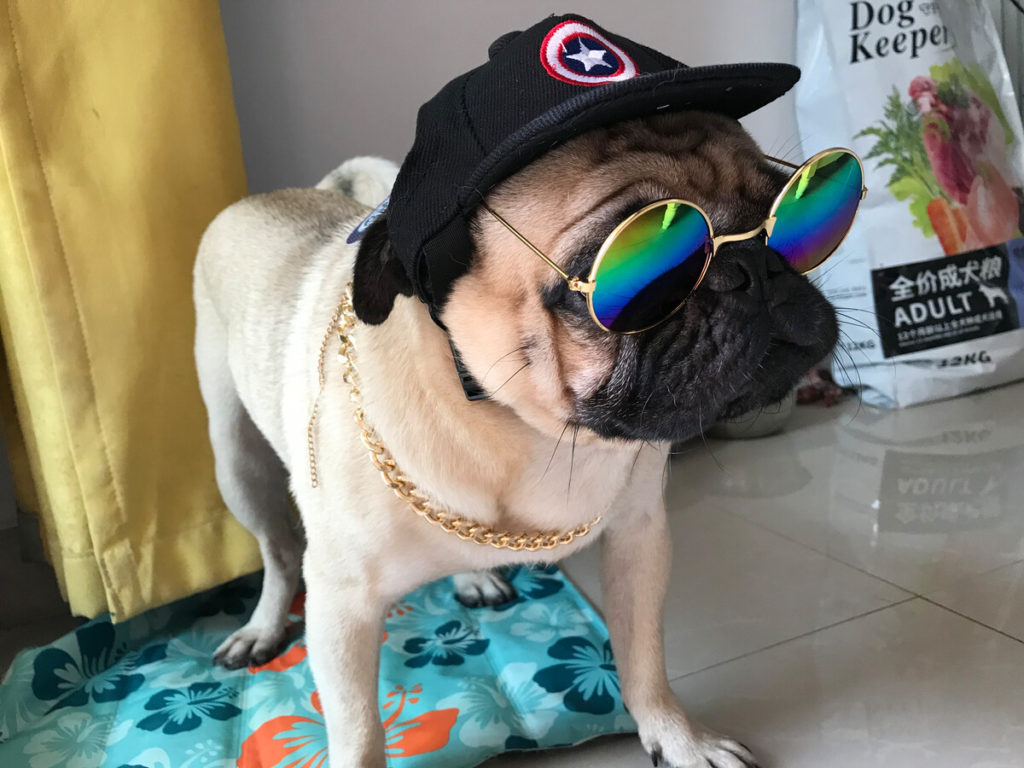
Following these steps will help your pup get used to its new harness in no time.
- Allow your dog to get to know their new harness by having it smell it and eat a treat off of it.
- Praise your dog each time it makes contact with the harness.
- If the harness has a snap or buckle, click it around your Pug so it gets used to the sound.
- Once your pup seems okay with the harness (this may take a few weeks), allow it to wear the harness inside. Give treats and praise if your Pug does well with this.
- Allow your pup to wear the harness around several times, then attach the leash while your dog drags the leash behind them indoors. Don’t forget treats and praise!
- When your Pug seems to be okay with walking on a harness and leash, it’s time for walks. Reward good walking manners to show your pup that you’re pleased with its behavior.
Final Thoughts
A Pug harness can make all the difference when it comes to walks and rehabilitation. Choosing the right harness (front-clip, back-clip, dual-clip, head halter, and rehabilitation) that’s the best fit and comfort level will bring you and your loved pooch a peace of mind when it comes to safety and spending time outdoors.

